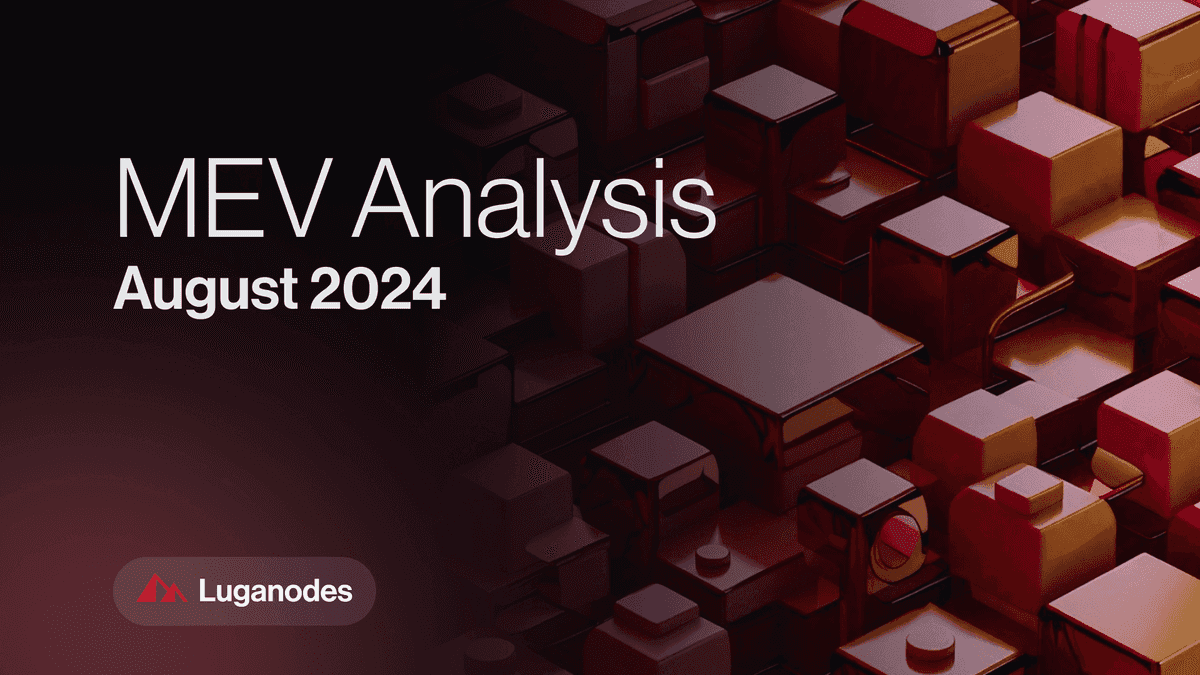3 min read
MEV Flash Analysis: August 2024
Graphs for Clarity

Introduction
This month, we delved into MEV as part of our Explained series. As seen in global search trends and ongoing discussions across social media, interest in MEV and its impact on the crypto space has surged. Our analysis highlights MEV as a neutral force—one that can be exploited for profit or strategically used to benefit users.
MEV bots, often referred to as "searchers," play a pivotal role in this space. These bots crawl the mempool—a temporary storage area where blockchain transactions wait to be confirmed. By exploiting the mempool and using various extraction techniques, searchers can capitalize on other users' transactions. On average, profits range from $0 to $10 per transaction, although this number can fluctuate greatly.
Despite evolving blockchain protocols, MEV extraction continues as it has in the past, as demonstrated by daily MEV revenue data on Ethereum, gathered from Flashbots.

Types of MEV Extraction
MEV revenue stems from a variety of strategies. Key types include arbitrage, liquidations, front-running, and sandwich attacks. Each strategy operates differently and affects the blockchain ecosystem in unique ways, yet they all share the common objective of extracting value from transactions. For more detailed methods, check out our dedicated blog post.
EigenPhi’s continuously updated dashboard breaks down the performance of these strategies by profit and volume. Arbitrage, for example, remains the most profitable strategy, while sandwiching dominates in terms of transaction volume over the last 30 days.


Tackling MEV
As with many inevitable complexities, there are two main schools of thought when it comes to handling MEV. The first aims to minimize it through redesigning transaction ordering or masking transaction details to make it harder for bots to extract value. The second school accepts MEV’s existence and focuses on regulating its capture, ensuring that extraction happens in a controlled and equitable way.
In the graph below, we can observe the increasing adoption of minimization strategies, particularly through the use of private mempools enabled by Flashbots.

A notable solution is MEVBlocker, developed by the Cow Protocol team. It leverages an auction-based order flow system designed to protect trades from MEV and provide rebates to users. While its adoption is gradual, more users are recognizing the impact and the need for protective measures.

Conclusion
MEV remains a multifaceted issue within the blockchain ecosystem. Although it presents certain challenges, like transaction exploitation, it also creates opportunities for profit and innovation. This August, our analysis shows a growing awareness of MEV, and how its management will shape the future of decentralized finance.
About Luganodes
Luganodes is a world-class, Swiss-operated, non-custodial blockchain infrastructure provider that has rapidly gained recognition in the industry for offering institutional-grade services. It was born out of the Lugano Plan B Program, an initiative driven by Tether and the City of Lugano. Luganodes maintains an exceptional 99.9% uptime with round-the-clock monitoring by SRE experts. With support for 45+ PoS networks, it ranks among the top validators on Polygon, Polkadot, Sui, and Tron. Luganodes prioritizes security and compliance, holding the distinction of being one of the first staking providers to adhere to all SOC 2 Type II, GDPR, and ISO 27001 standards as well as offering Chainproof insurance to institutional clients.
The information herein is for general informational purposes only and does not constitute legal, business, tax, professional, financial, or investment advice. No warranties are made regarding its accuracy, correctness, completeness, or reliability. Luganodes and its affiliates disclaim all liability for any losses or damages arising from reliance on this information. Luganodes is not obligated to update or amend any content. Use of this at your own risk. For any advice, please consult a qualified professional.